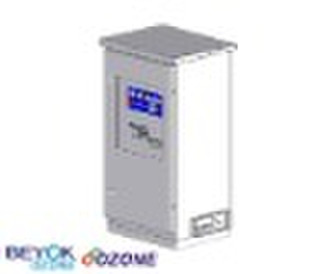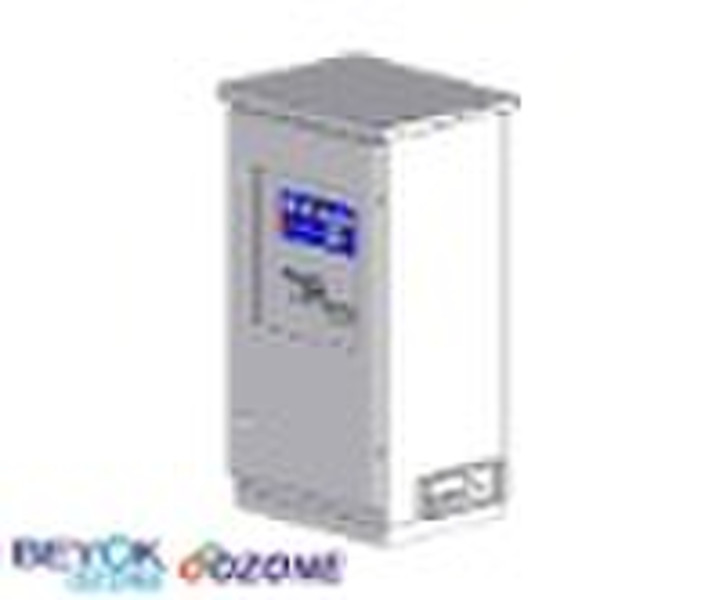Catalog
-
Catalog
- Agriculture
- Apparel
- Automobiles & Motorcycles
- Beauty & Personal Care
- Business Services
- Chemicals
- Construction & Real Estate
- Consumer Electronics
- Electrical Equipment & Supplies
- Electronic Components & Supplies
- Energy
- Environment
- Excess Inventory
- Fashion Accessories
- Food & Beverage
- Furniture
- Gifts & Crafts
- Hardware
- Health & Medical
- Home & Garden
- Home Appliances
- Lights & Lighting
- Luggage, Bags & Cases
- Machinery, Hardware & Tools
- Measurement & Analysis Instruments
- Mechanical Parts & Fabrication Services
- Minerals & Metallurgy
- Office & School Supplies
- Packaging & Printing
- Rubber & Plastics
- Security & Protection
- Service Equipment
- Shoes & Accessories
- Sports & Entertainment
- Telecommunications
- Textiles & Leather Products
- Timepieces, Jewelry, Eyewear
- Tools
- Toys & Hobbies
- Transportation
Filters
Search
Skid-mounted Ozone Generator
original price: 3 500 USD
Wenzhou, China
Production capacity:
20 Unit / Month

BEYOK ozone
Contact person
Basic Information
| Place of Origin | Zhejiang China (Mainland) |
|---|---|
| Brand Name | BEYOKozone |
| Model Number | GQO-40 |
Specifications: Ozone Output (±10%): 40 g/hr @ 20 SCFH with oxygen Ozone Concentration: Up to 7% by weight Ambient Operating Temp: 40°F - 100°F Power Requirement: 220V/50Hz-120V/60Hz available, MAX 1200 Watts Control: 1 100% variable ozone output Cooling Water:3 SCFH, 50°F - 90°F, 10-30 PSI Cooling Water Connection: 1/4" FPT connections Ozone Output Connection: 3/8-inch stainless steel compression fitting Chassis: Stainless Steel Chassis Dimension (LxWxH): 25.6-in x 23.7-in x 53.1-in (650x600x1,350mm) Net Weight: 170-lb (75kg) Features: · Turn Key Ozone Generation System· Manual 1-100% ozone output control· Very compact system· Easy installation and simple operation· Economical, and minimal maintain· Designed for easy of service· One year warrantyBenefits:· Better sanitation-complete disinfection on contact· Eliminates odors-powerful, but safe· Saves money-reduces or eliminates chemical use· Saves time-disinfectant produced on-site(no storage, mixing or handling of chemicals)· Protects the environmentApplication:· Commercial swimming pools· Bottling plants· Small community portable water systems· Waste water· Aquatic life support· Beverage processing· Food processing· Winery applicationsThe GQO-40 skid-mounted is a complete turnkey corona discharge ozone contacting system with two individually-fused reaction chambers. The ozone generator is housed in a stainless steel cabinet and made with high-quality materials and components and has an adjustable ozone output of 40 grams/hour on oxygen. Size View:Some Installations for reference:Ozone Knowledge:Bottling (Water, juices, beverages, wine) Ozone is used in the bottled beverage industry to treat the water used to make the beverages, to sterilize bottles and to disinfect the bottling and filling equipment. In the wine industry, ozone is used to clean the barrels used to age the wine. Typical applications for ozone in the wine industry include the following:1. Barrel washing 2. Surface and equipment sanitization 3.Tank cleaning 4. Clean-in-place (CIP) of process and transfer pipingBarrel WashingTypically, 2.5 ppm ozone concentration for 2 minutes on healthy barrels after a hot water flush is sufficient. If the barrel is severely contaminated, a 5 minute treatment may be required. Ozone enhances the barrels by preventing organic buildup that undercuts the longevity of these precious vessels. Ozone washing of wine barrels saves wineries considerable money on the high costs of replacing contaminated wine barrels. As a result, most ozone installations yield a very high return on investment and short break even period.Surface and Equipment SanitizationA broad range of surfaces and equipment are routinely sanitized with ozonated water to control unwanted microbes and cross contamination. Harvest bins, crushing and de-stemming machines, conveyors, even floors are routinely and effectively sanitized using ozone. Bottles and bottling equipment are sanitized with ozone as well.Tank CleaningWhile ozone is still the non-chlorinated cleaner of choice for initial sanitation, experience has proven that it should also be used for additional follow-on rinses as well. Stainless steel tanks may stand empty for a week or more after initial sanitization. Many wineries rinse all stainless steel vessels with ozonated water immediately prior to filling to ensure proper sanitization.CIP of PipingThe highest risk of contamination in the in winemaking process comes from transferring the wine between the many necessary tank and barrel treatment steps. To mitigate this risk, wineries adopt stringent measures to their CIP processes.CIP involves cleaning and sanitizing of pump systems, pipes, tanks, hoses, filters, bottling lines, etc. Using soaps, detergents, pressurized water and chemicals like chlorine or iodaphore solutions, these cleaning steps can require multiple rinses, often with hot water or steam, to remove residues. This labor and energy-intensive process is also a worker safety concern and can consume up to ten gallons of water for each gallon of wine produced.Ozone, already an integral part of CIP sanitization in the food processing industry, is a natural choice for wine’s process machines. Using ozone in their CIP process saves time as well as costs.
Delivery terms and packaging
Packaging Detail: Standard Export Package Delivery Detail: 40 days
Port: Shanghai, Ningbo, etc
Payment term
Documents Against Acceptance
Documents Against Payment
Letter of credit
Telegraphic transfer
Western Union
-
Payment Methods
We accept:









